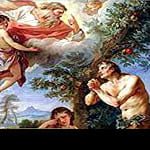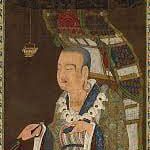Shakespeare | Sonnet 11 | Text | A Critical Study
Shakespeare | Sonnet 11 | A Critical Study
(Shakespeare’s Sonnet 11: Text, Analytical Study | Word Notes | Faqs)
Shakespeare’s Sonnet 11 – Text
As fast as thou shalt wane, so fast thou growest
In one of thine, from that which thou departest;
And that fresh blood which youngly thou bestowest
Thou mayst call thine when thou from youth convertest.
Herein lives wisdom, beauty and increase:
Without this, folly, age and cold decay:
If all were minded so, the times should cease
And threescore year would make the world away.
Let those whom Nature hath not made for store,
Harsh featureless and rude, barrenly perish:
Look, whom she best endow’d she gave the more;
Which bounteous gift thou shouldst in bounty cherish:
She carved thee for her seal, and meant thereby
Thou shouldst print more, not let that copy die.
Shakespeare’s Sonnet 11 – An Analytical Study
Theme:
Shakespeare’s Sonnet 11 is a part of his collection of 154 sonnets, which were published in 1609. The sonnet begins with the idea that as soon as one begins to age, they also begin to grow in wisdom and experience. The poem progresses to explore the concept of giving and receiving and the importance of cherishing the gifts of nature.
The sonnet is written in the traditional Shakespearean format, which comprises of three quatrains and a final couplet. The rhyme scheme is ABAB CDCD EFEF GG. The meter is iambic pentameter, which consists of ten syllables in each line, with emphasis on every second syllable.
The sonnet begins with the speaker addressing the idea of growth and change, saying that as soon as one begins to diminish or wane, one also starts to grow in some other way. The second line refers to the idea that as one leaves behind something, one moves towards something new. The third line introduces the concept of youth, and the idea that when one is young, they have a lot of energy to give. The fourth line refers to the fact that when one grows old, they can still possess and use the wisdom and experience that they have accumulated in their youth.
The second quatrain talks about the importance of giving and receiving. The speaker states that wisdom, beauty, and increase can only be obtained through giving, and not through taking. Without giving, there is only folly, age, and decay. The speaker states that if everyone were to be selfish and only take, then the times would cease, and the world would come to an end. The number “threescore” (60) is used to represent a lifespan, and the idea is that if everyone only lived for 60 years, then the world would be a barren and empty place.
The third quatrain brings in the idea of natural gifts and abilities. The speaker states that those who are not blessed with natural gifts will perish, while those who are blessed with gifts will flourish. The speaker urges the reader to cherish their natural gifts and to use them to their fullest potential. The speaker states that nature has carved the reader for a specific purpose, and it is up to them to fulfill that purpose.
The final couplet wraps up the poem by saying that the reader has been “carved” by nature as a seal, and their purpose is to use their gifts to create more gifts. The idea is that the reader should not let their gifts go to waste, but should instead use them to make a difference in the world.
Overall, Shakespeare’s Sonnet 11 is a meditation on the concept of growth, change, and the importance of using one’s gifts to make a difference. The poem uses literary devices such as metaphors, imagery, and personification to convey its message. The metaphor of the seal represents the reader’s purpose in life, and the idea of growth and change is conveyed through the imagery of youth and aging. The poem is a timeless meditation on the importance of giving and receiving, and the value of cherishing the gifts that nature has bestowed upon us.
Literary Devices:
Metaphor: The sonnet begins with a metaphor that compares the youth’s beauty to the summer season, which is temporary and fleeting. The metaphorical language continues in the second quatrain, where the youth’s beauty is compared to the “gold complexion” of the sun.
Personification: Time is personified in the third quatrain when it is described as a “sluttish” mistress who is always running after the youth, but will eventually tire of him and move on to someone else.
Alliteration: The use of alliteration is prominent in the sonnet, particularly in the second quatrain, where there is an emphasis on the “g” sound, with words like “gold,” “gild,” and “glutton.” This creates a musical and rhythmic effect that adds to the overall beauty of the poem.
Imagery: The sonnet contains vivid imagery that evokes a sense of the transience of youth and beauty. The imagery of the “fading” summer and the “death-bed” of winter, for example, vividly depicts the passage of time and the decay that it brings.
Rhyme: The sonnet follows the traditional Shakespearean rhyme scheme, with a rhyme scheme of ABAB CDCD EFEF GG. The use of rhyme adds to the sonnet’s musicality and creates a sense of closure and completeness at the end.
Overall, Shakespeare’s use of literary devices in Sonnet 11 creates a powerful and poignant meditation on the inevitability of time and the transience of youth and beauty. The metaphorical language, personification, alliteration, imagery, and rhyme all work together to create a beautiful and memorable poem that continues to resonate with readers today.
Shakespeare’s Sonnet 11 – Word Notes
Here are the meanings of some of the key words and phrases in this sonnet:
Wane: To diminish or decrease, typically in size or intensity.
Grow’st: Growest, which means to grow or increase.
Thine: Yours.
Departest: Departest, which means to leave or separate from.
Fresh blood: Youthful energy or vitality.
Convertest: To change or transform.
Wisdom: Intelligence, knowledge, or good judgment.
Beauty: Attractiveness or charm.
Increase: Growth or expansion.
Folly: Foolishness or lack of good judgment.
Age: The state of being old or advanced in years.
Cold decay: The deterioration or decline of something.
Minded: To have a particular intention or inclination.
Threescore: Sixty years.
Shakespeare’s Sonnet 11 – Faqs
Q: What is Shakespeare’s Sonnet 11 about?
A: Shakespeare’s Sonnet 11 is addressed to a young man and reflects on the importance of procreation and having children to ensure that the beauty of the young man is not lost to the world. The speaker urges the young man to marry and have children so that he can pass on his beauty and qualities to the next generation.
Q: What is the structure of Shakespeare’s Sonnet 11?
A: Shakespeare’s Sonnet 11 follows the typical structure of a Shakespearean sonnet, consisting of three quatrains and a final couplet, with a rhyme scheme of ABAB CDCD EFEF GG. The poem is written in iambic pentameter, which means each line has ten syllables with a stressed syllable followed by an unstressed syllable.
Q: What is the tone of Shakespeare’s Sonnet 11?
A: The tone of Shakespeare’s Sonnet 11 is serious and reflective. The speaker is concerned about the future and the fate of the young man’s beauty, urging him to marry and have children in order to preserve his qualities for future generations.
Q: Who is the speaker of Shakespeare’s Sonnet 11?
A: The speaker of Shakespeare’s Sonnet 11 is not identified, but many believe it to be the voice of Shakespeare himself.
Q: What is the central theme of Shakespeare’s Sonnet 11?
A: The central theme of Shakespeare’s Sonnet 11 is the importance of procreation and having children to ensure that beauty and qualities are passed down to future generations. The poem is a reflection on the fleeting nature of youth and the need to preserve it through procreation.
Q: What literary devices are used in Shakespeare’s Sonnet 11?
A: Shakespeare’s Sonnet 11 employs several literary devices, including personification, metaphor, and alliteration. For example, the line “Nor shall Death brag thou wander’st in his shade” uses personification to give Death human qualities. The line “So should the lines of life that life repair” uses metaphor to compare procreation to the repair of a damaged object. Alliteration is used in lines such as “fair, kind, and true” to create a musical effect.
Q: What is the historical context of Shakespeare’s Sonnet 11?
A: Shakespeare’s Sonnet 11 was likely written in the late 16th century or early 17th century during the Elizabethan era, a time when the importance of procreation and having children was emphasized. The poem reflects this cultural value and encourages the young man to marry and have children to preserve his qualities for future generations.
N.B. This article ‘Shakespeare | Sonnet 11 | Text | A Critical Study’ originally belongs to the book entitled ‘Shakespeare’s Sonnets-Critical Studies‘ by Menonim Menonimus.
Books of Literary Criticism by M. Menonimus:
- World Short Story Criticism
- World Poetry Criticism
- World Drama Criticism
- World Novel Criticism
- World Essay Criticism
- Indian English Poetry Criticism
- Indian English Poets and Poetry Chief Features
- Emily Dickinson’s Poetry-A Thematic Study
- Walt Whitman’s Poetry-A Thematic Study
- Critical Essays on English Poetry
- Tawfiq al-Hakim’s Novel: Return of the Spirit-An Analytical Study
- Tawfiq al-Hakim’s Novel: ‘Yawmiyyat Naib Fil Arayaf’-An Analytical Study
- Analytical Studies of Some Arabic Short Stories
- A Brief History of Arabic Literature: Pre-Islamic Period (500 AD-622 AD)
- A Brief History of Arabic Literature: Early Islamic Period (622 AD-661 AD)
- Reviews on William Shakespeare’s Works
- Reviews of Charles Dickens’ Works
- Reviews of John Milton’s Literary Works
- Reviews of Some Iconic Travelogues
- Shakespeare’s Sonnets-Critical Studies …
Additional Searches:
- Shakespeare’s Sonnets-Study Guide
- Shakespeare’s Sonnets
- Shakespeare Sonnets
- The Elizabethan Sonnet Sequence
- Thematic Study of Shakespeare’s Sonnets
- Shakespeare’s Sonnet 1 …











